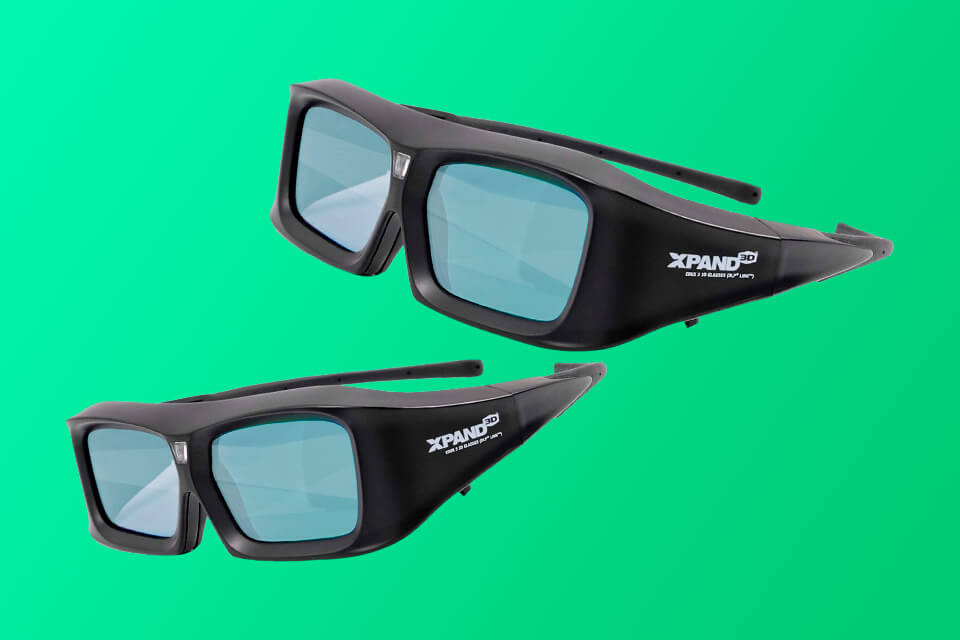
#THE BEST 3D GLASSES FOR PROJECTORS MOVIE#
When you’re sitting still watching a movie or playing a game that’s too real, it sends mixed signals to your brain. It's a real thing, a “sensory mismatch” like motion sickness, and it can ruin your enjoyment of the 3D experience. When you get nauseated watching a 3D movie or playing a 3D video game, it's called cybersickness. Mid-range: If you need polarized glasses, the kind that will work at an IMAX theater, those start at around $9 for clip-on lenses but can cost up to $15 for a stylish pair.Įxpensive: For active shutter 3D glasses, you can expect to pay between $15 and $25. At the lower end, the glasses are cardboard, but at the upper end, they look and feel more like sunglasses. Inexpensive: If you’re looking for a pair of anaglyph glasses (red and cyan), you can expect to pay between $2 and $9 each. For example, a pack of four pairs of polarized 3D glasses might cost $20 or more, which would also plant it firmly in active 3D glasses territory. The price ranges overlap when you purchase packs of multiple pairs. The price brackets for 3D glasses fall pretty much in line with the type. If you’re using active 3D glasses, this is a feature you’ll greatly appreciate. Fortunately, most 3D glasses have a standby mode that automatically turns on when the glasses are in use or shuts off when the sync has been lost. The next time you go to watch a 3D movie, you can't because the battery is dead. You take them off after a pulse-pounding movie and set them on the coffee table. Power-saving mode: It’s easy to forget to turn off your active glasses. Ideally, you want a battery that can charge in just hours but can last for months on standby. If you already wear prescription glasses, this might be a better option for you.īattery: Active 3D glasses need a power source, which is usually a rechargeable battery. If you can see around the edges of your lenses while looking straight ahead, you might not have the best 3D experience.Ĭlip-on: Some 3D glasses, usually passive glasses, are available as lightweight clip-ons. This makes a difference in terms of comfort (how tight or loose the glasses feel on your head) and the size of the lenses. If you can find glasses that offer adult and child sizes, that is advisable. Size: The best 3D glasses are not one size fits all. However, if you'd like to enhance your overall user experience, here are a few additional aspects to consider. However, it’s also the costliest.Īs long as your 3D glasses use the same technology as your images, they will work. Active shutter 3D is the best 3D system, offering a higher resolution than polarized 3D.

At slower speeds, the viewer can detect a flickering, but in the latest models, the flicker is so fast that the eye doesn't notice. When the projector and the glasses are synced, the right eye is blocked while the image for the left eye is on the screen, then the left eye is blocked while the image for the right eye is on the screen. These glasses only work with special projectors that display rapidly alternating images. This type of 3D glasses is also passive, but it’s preferred over anaglyph because it allows the viewer to experience 3D images in color.Īctive shutter: 3D glasses with an active shutter require power in order to function.

Correspondingly, polarized 3D glasses feature a different type of polarization in each lens to allow each eye to only view one of the superimposed images. Polarized: A polarized 3D image uses a different type of polarization for each image. These are the least expensive 3D glasses (often the frames are cardboard), though more expensive models exist. Anaglyph 3D glasses feature two lenses, each a different color - typically red and cyan, but there can be other color combinations. This is a passive technology, meaning it requires no power to work.

In other words, you can't use one type of 3D glasses to view a different type of display.Īnaglyph: An anaglyph 3D image uses color to distinguish two superimposed images that your brain merges into one. Types of 3D glassesĬurrently, there are only three types of 3D glasses available - anaglyph, polarized, and active shutter - and each one is only compatible with a specific type of technology. When cleaning, use a nonabrasive cloth on one side of the lens at a time.

The lenses of polarized 3D glasses are easily damaged.


 0 kommentar(er)
0 kommentar(er)
